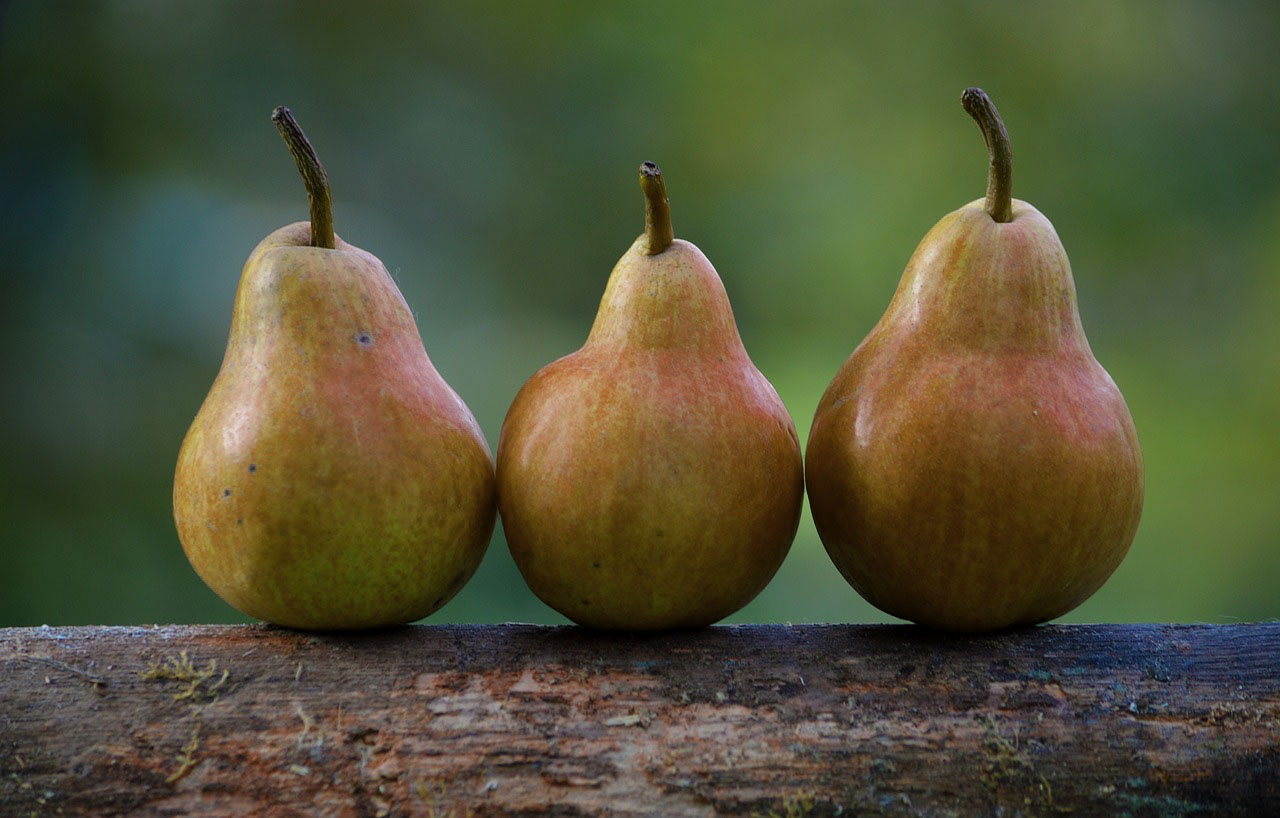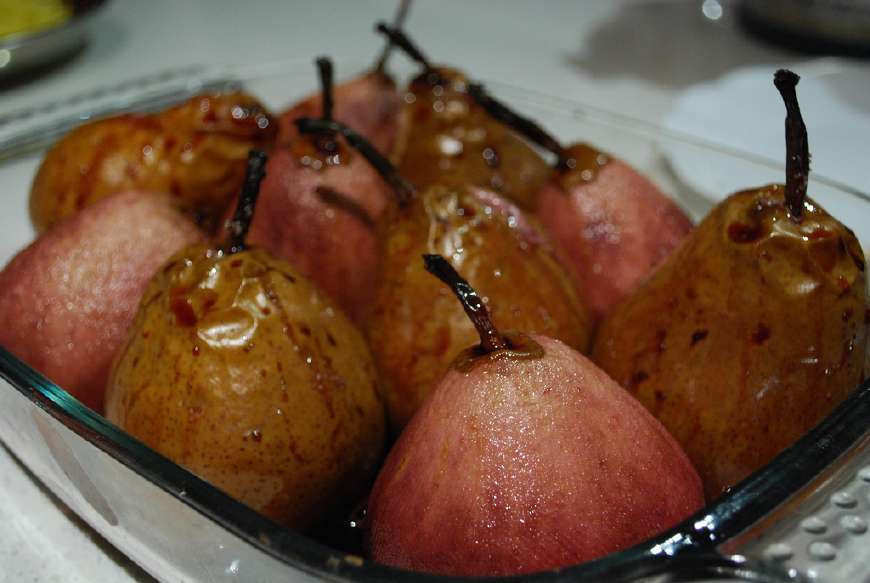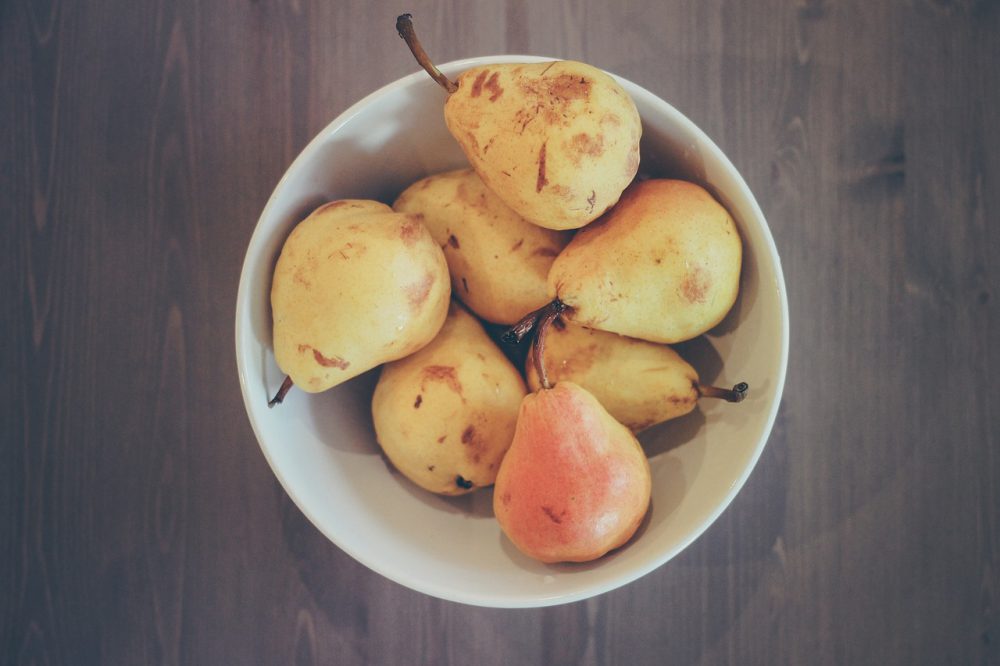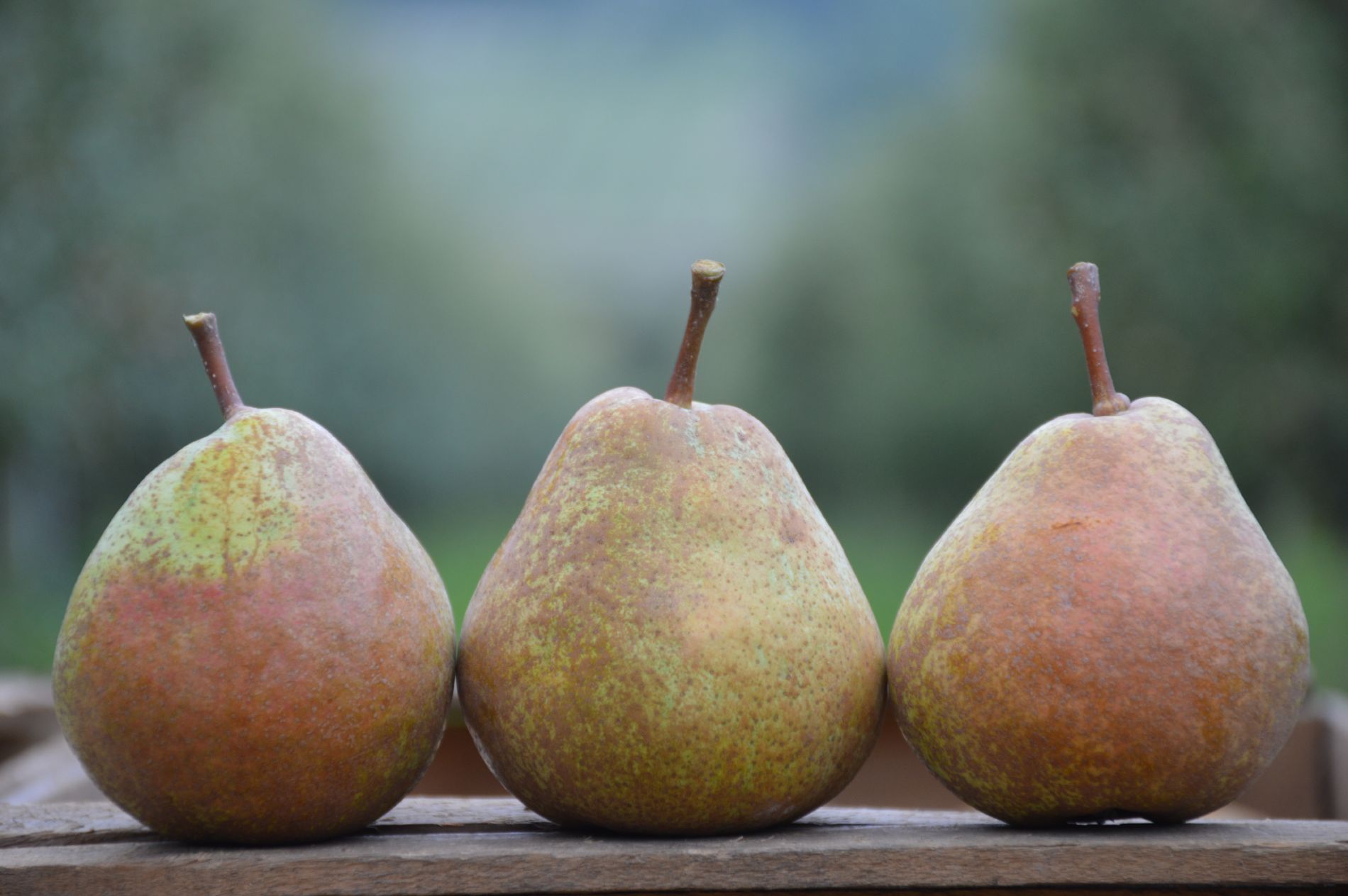
Pera Madernassa
Product Type
Production Area
First mention
Quality mark
Obtained on
The Madernassa pear is a variety originating from Roero, which has always been considered a source of pride for traditional local cuisine.
Like many native species, it has long remained unknown to most people, with a limited use to local farmers who appreciated it for its crunchiness and for the aromatic enhancement given by cooking, both in wine and in the oven.
The first steps towards its official recognition took place in 2015 in Guarene, when a group of young local producers and entrepreneurs decided to found the “Consorzio per la valorizzazione e la tutela della Pera Madernassa di Guarene e del Roero”.
The Consortium, made up of 28 members from Alba and 22 municipalities of Roero, has as its purpose the promotion of the product and the facilitation of internal and export trade.
It is mainly made up of young agricultural entrepreneurs who undertake to supervise production, conservation and trade, through a regulation that prohibits the use of chemical herbicides and reduces the number of treatments for some active ingredients.
Today the many uses of this variety are well known, particularly appreciated for the production of cider, but also for the many traditional desserts.
Every year, in October, the town of Guarene hosts the “Madernassa Pear Festival“, three days dedicated to the enhancement of this unique fruit.
Name origin
The variety takes its name from the homonymous hamlet of Vezza d’Alba, a town very close to Alba, the capital of the Langhe and at the gates of the Roero. In fact, it is in this land that grew the first plant, which originated around the end of 1700 on the property of Cascina Gavello.
Initially called the “Gavello” pear, it later became the “Madernassa”, to pay homage to the hills where the variety grows best.
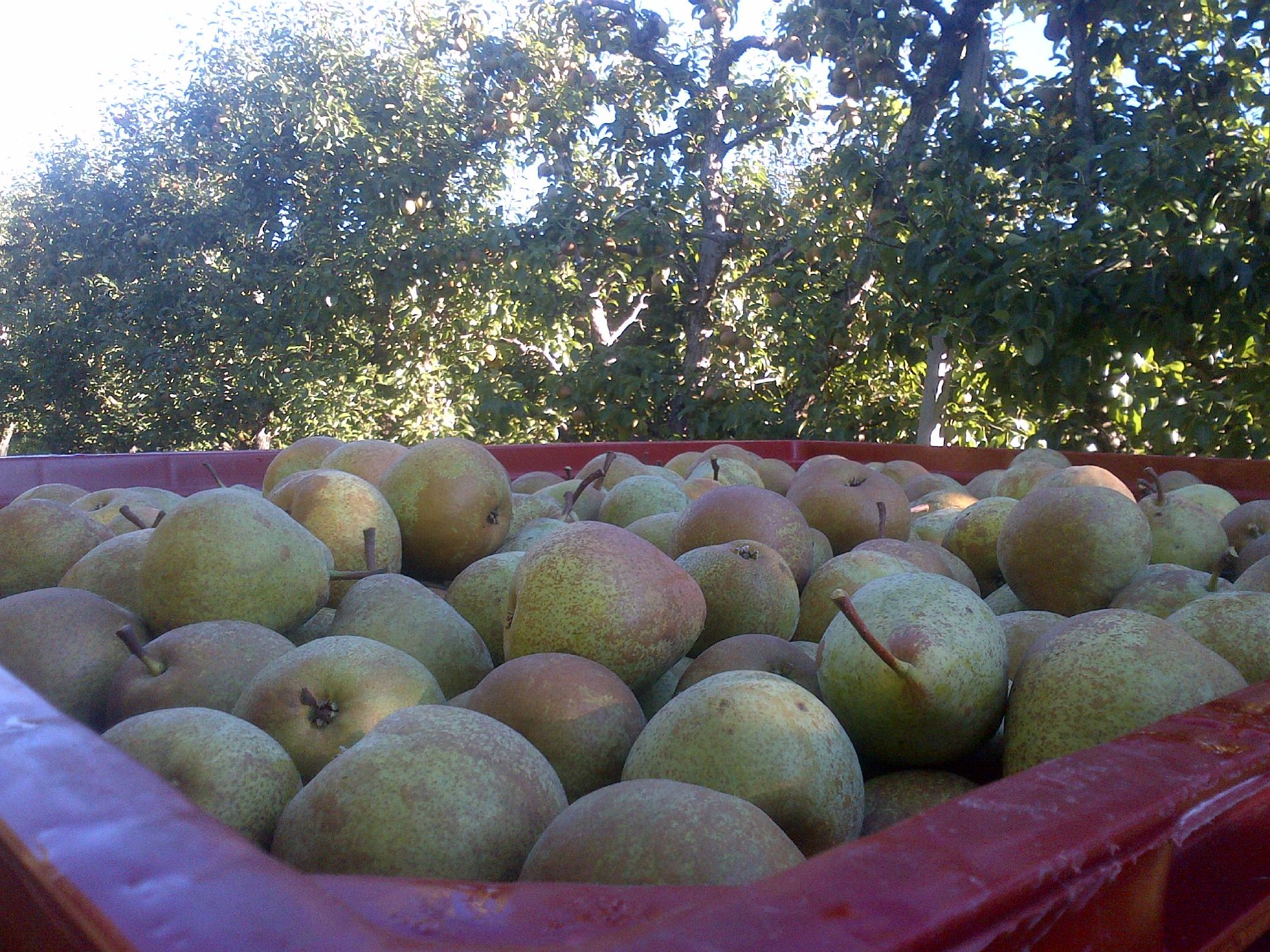
A full production plant can reach a yield of 480 quintals per hectare!
Madernassa Pear In the kitchen
Between desserts, risottos and pear ciders ... a versatile fruit with a deep aromatic complexity!
Madernassa seems to be a cross between a wild variety and the better known Martin Sec, of which it retains its crunchiness and tannins.
Although it is possible to consume it raw once it is ripe, the farmers of these lands soon discovered how suitable it was for cooking, especially in the excellent local red wine. The pulp in fact releases all its aromas once cooked, preserving its crunchiness and compactness, its distinctive features.
Therefore, among the traditional desserts of Roero there is never a lack of “Madernassa al vino”, which is none other than the pear in its entirety, cooked for about 30 minutes in a syrup of one or more varieties of wine combined with sugar and spices (usually cinnamon and cloves).
Again thanks to its crunchiness, this pear also lends itself to many other recipes, including jam, traditional mustard and “cognà“, the many versions of cake, liqueurs and in particular the delicious Madernassa and cheese risottos … indulge yourself !
Madernassa Pear: nutrition facts
These pears are low in calories (30-35 kcal per 100 g), rich in insoluble fiber and contain a fair amount of potassium.
They have a rather high satiety index and are therefore indicated as an afternoon snack or at the end of a light meal.
Energy for 100 g.
Proteins for 100 g.
Carbs for 100 g.
Sugar for 100 g.
Fats
Fiber
Average weight
Related recipes
Organoleptic characteristics
The average weight of a fruit is about 150 g, and its shelf life is good.
The fruit is of medium size, with a "Turbinate-conical" shape, that is, reminiscent of a spinning top. When fully ripe, the skin, fine and resistant, is smooth, green-yellowish in color, sometimes with red / orange spots. There are typically dots on it, which give it the typical appearance of autumn fruits.
The pulp is semi-fine, but with an accentuated firmness and consistency. The flavor is sweet, but balanced by a good acidity, which increases in the inner part of the pulp.
It is a slightly aromatic fruit, which with cooking sees a marked organoleptic improvement with the formation of new aromas. These make Madernassa a unique and delicious dessert, suitable to be consumed alone, but also with creative combinations.
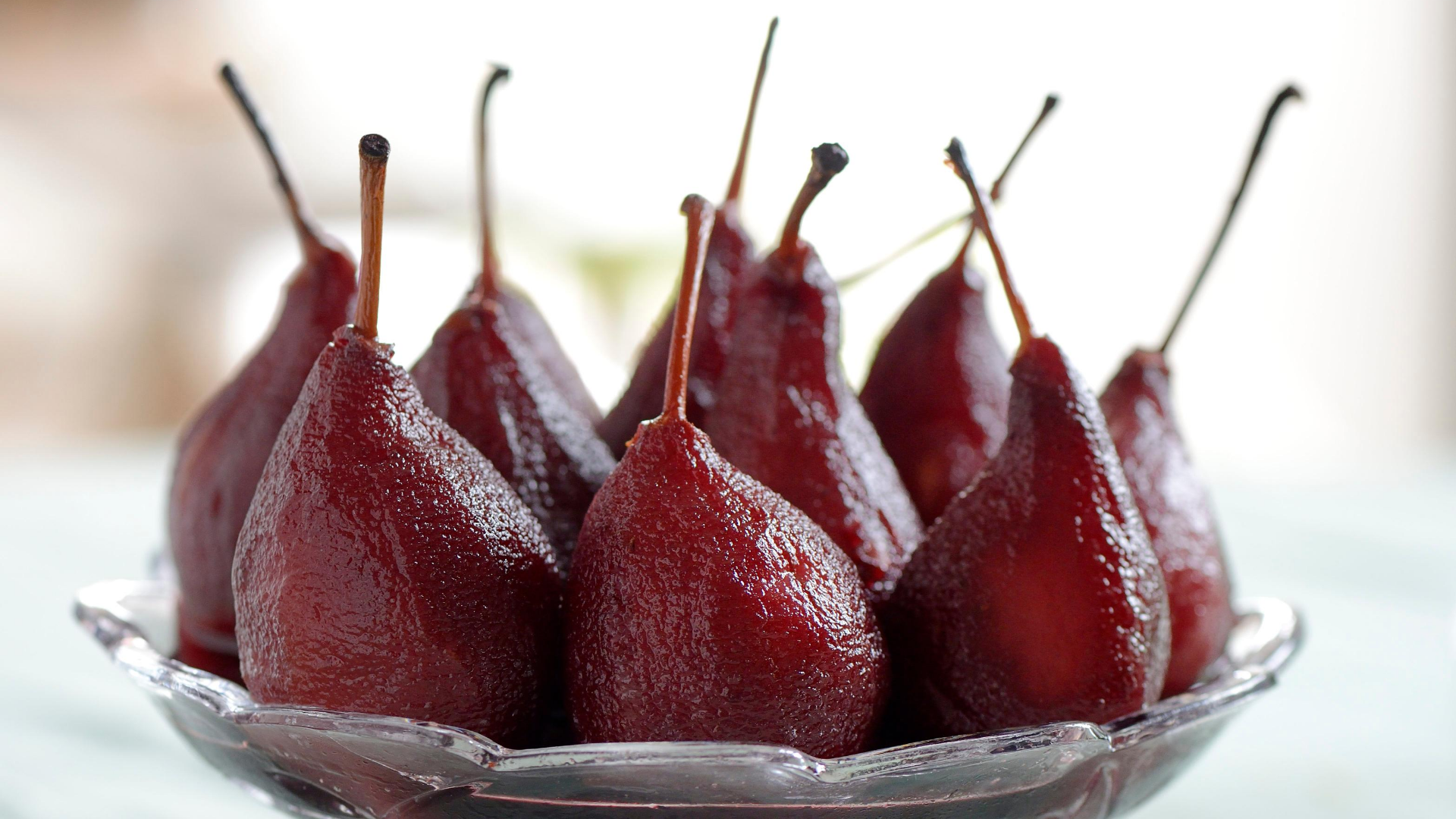
Traditionally the preferred way to consume this pear

Madernassa Pear
A story that
begins in 1784
The Madernassa pear was born by chance, from a seed that fell to the ground: it is believed to be a cross between the Martin Sec and a wild species.
The origin of the Madernassa variety is traced back to the late 1700s. In these years a farmer from the homonymous locality, more precisely from the Gavello farm, discovers a pear plant with an unknown appearance, probably born from a discarded seed.
This plant grows and produces a large amount of fruit, which are later recognized as a cross between Martin Sec and some wild variety. The inhabitants of the place appreciate it so much for its properties that they decide to multiply it on their farms, leading to its spread throughout the Alba area.
The mother plant was cut down in 1914 at the age of 130, with a trunk with a circumference of 2.60 m and a productivity even higher than 25 quintals.
In 1999, the process for the recognition of the Protected Geographical Indication began, still in progress.
Below is a text written by Professor Raffaele Carlone in the periodical "L’Italia Agricola", which summarizes the history of the variety:
“La Madernassa was first described by Cavazza (1908) who magnified its rusticity, productivity and long life. It was then mentioned in the Pomology of Pomon (1916) which pointed out the spread of the variety not only in Piedmont but also outside the region.
However, it was only in 1927 that the variety was brought to the attention of fruit growers at the Fruit Growing Congress in Lugo, where it was also recommended to be adopted in other areas of northern Italy.
The mother plant was born from a seed that fell by chance in a plot of the Gavello farmhouse in Borgata Madernassa on a hill between the towns of Guarene and Castagnito.
When it began to bear the first fruits, the owner immediately appreciated its goodness and, when the tree proved to be rustic and vigorous, he propagated it by grafting it on some pear trees that were present on the farm.
Soon the cultural and commercial qualities of the variety were known by the neighbors who multiplied it on their farms and from here the cultivar spread throughout the Alba area.
At first the variety was known with the name of Gavello and only later was it indicated with the name of Madernassa: its date of birth can also be established with relative approximation if we consider that the mother plant was cut down in 1914 and had about 130 years.
It is widely believed that it derives from the natural crossing of the Martin Sec cultivar with the wild. "
Farming
Once cultivated in many areas of the Cuneo area, today the production area is limited to the most suitable area of Roero and Valle Grana.
The soil of Alba – sandy and tending to clay – the hills and the warm climate give the variety a particularly attractive appearance and a unique flavor, also suitable for fresh consumption.
In the mountainous and foothill areas of Roero and Valle Grana the soil is instead of medium texture, giving life to a product more suitable for cooking.
The tree is vigorous, rustic, particularly fertile. Flowering occurs in a medium-early period. It is a parthenocarpic variety (that is, it also produces seedless fruits).
The irrigation system varies according to the conformation of the land on which it is cultivated, and can be both sliding and drip, while the phytosanitary defense is the same as required by good agricultural practice.
The density of plants is maximum 600 per hectare as regards the espalier or spindel cultivation system. In the case of plants grafted on a “free” foot, considering the size of the tree which can reach a height of more than 4.5 meters, there is a maximum plant density of 100 per hectare for existing plants and 200 per hectare on new plants.
The production of Pera Madernassa in plants in full production, cultivated both on free and on rootstocks, can reach 480 quintals per hectare.
The harvest begins approximately in September and ends in November.
Harvest time
Preferred Soil
Plants per hectare
200 (piede franco)
